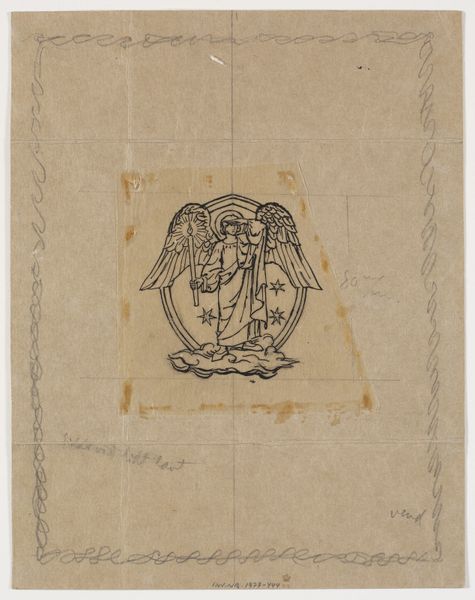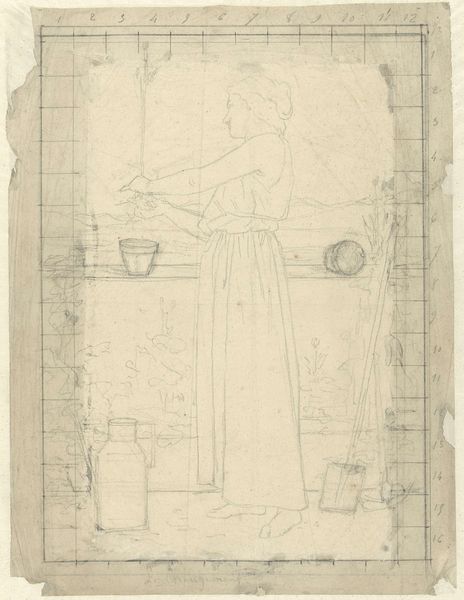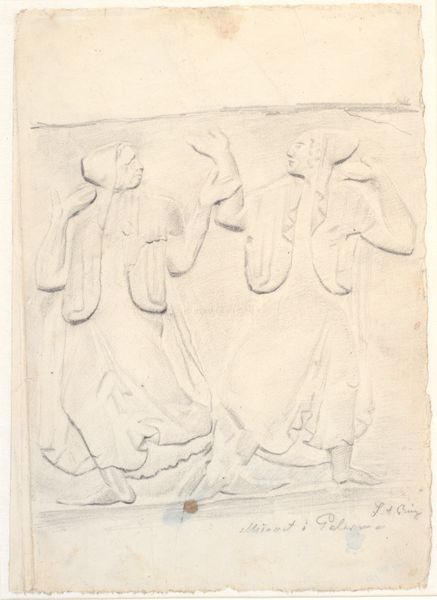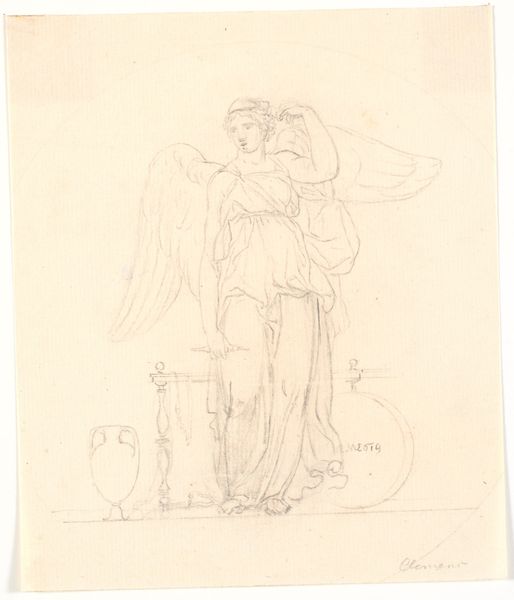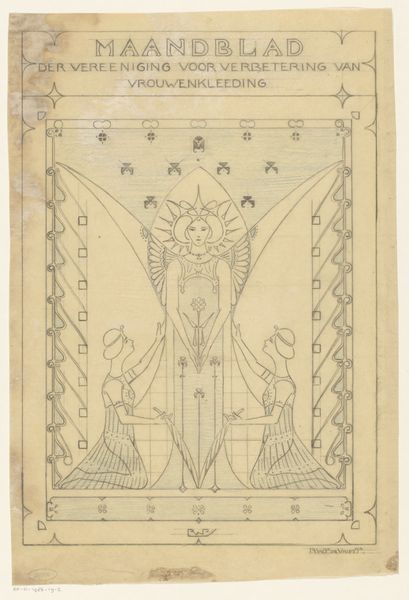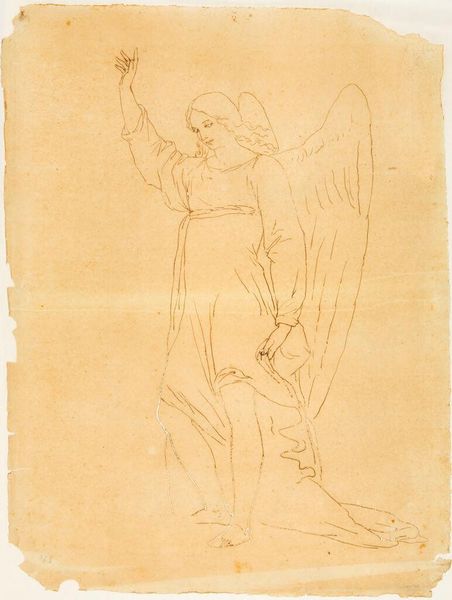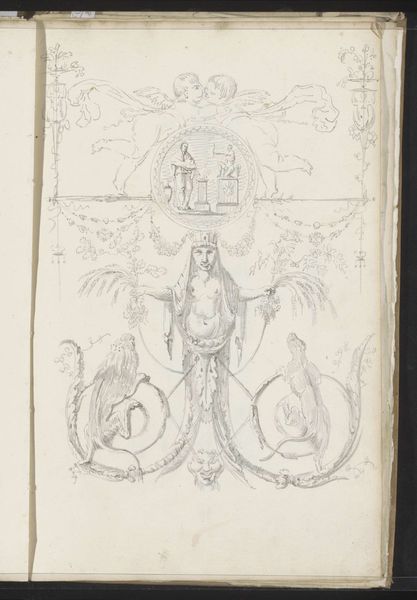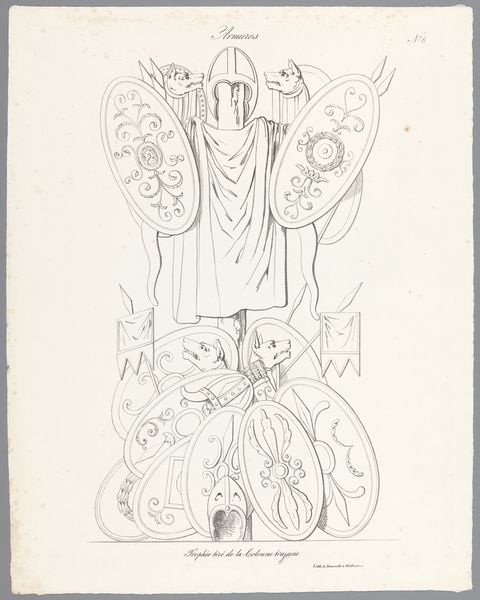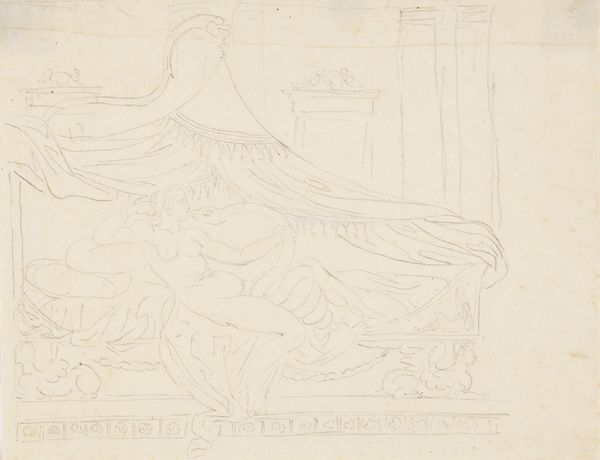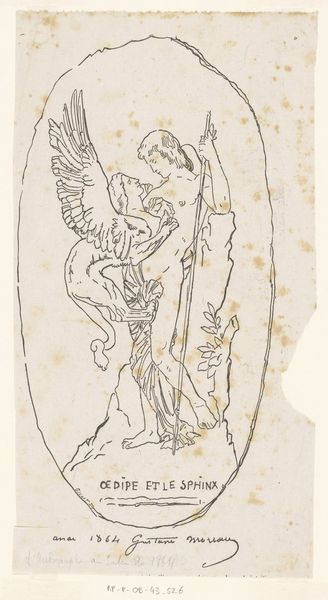
Victory Triptych 1919
0:00
0:00
konstantinosparthenis
National Art Gallery (Alexandros Soutzos Museum), Athens, Greece
drawing, paper, ink
#
drawing
#
narrative-art
#
ink painting
#
figuration
#
paper
#
ink
#
modernism
Dimensions: 50 x 92 cm
Copyright: Public domain US
Editor: Here we have Konstantinos Parthenis' "Victory Triptych" from 1919, an ink drawing on paper. It's fascinating how Parthenis uses such minimal lines to depict these figures. It almost feels like they are emerging from a dream. How do you interpret this work? Curator: It's less about "how" and more about "why." Let's consider what Parthenis is drawing on, here. A triptych format automatically evokes religious altarpieces, right? The central figure is an angel, holding a laurel – symbols of victory and peace, clearly, but whose victory? After what sacrifice? Editor: Well, 1919 would place this just after the First World War... so, the Allied victory, presumably? Curator: Precisely. Now, look at the figures flanking the angel. A soldier on one side, and a statesman, likely a political leader, on the other. What symbols do you see connecting these seemingly disparate figures? Editor: They are rendered using the same stark, linear style; they also share a common ground of simplified lines that seem to represent landscape... Is it meant to suggest the whole society bears a relationship to the war? Curator: Interesting, I would go further, it suggests inter-related elements. The spiritual ideals embodied in the angel and laurel are brought to earth, perhaps sullied, by the pragmatic realities represented by the soldier and politician. What does the reduction of these archetypes into stark silhouettes convey to you? Editor: Maybe... that the trauma and loss are so immense, all that's left are outlines? Like cultural memory struggling to remember what it has survived. Curator: A good consideration! Visual shorthand serves emotional realities here. Perhaps "Victory Triptych" suggests the scars of victory, subtly questioning triumphal narratives. We see, this triptych becomes a powerful meditation on the cost of peace and its representation through time. Editor: I hadn’t thought of it that way. Seeing it as an after-image of something much larger shifts the meaning completely. Thank you.
Comments
No comments
Be the first to comment and join the conversation on the ultimate creative platform.
